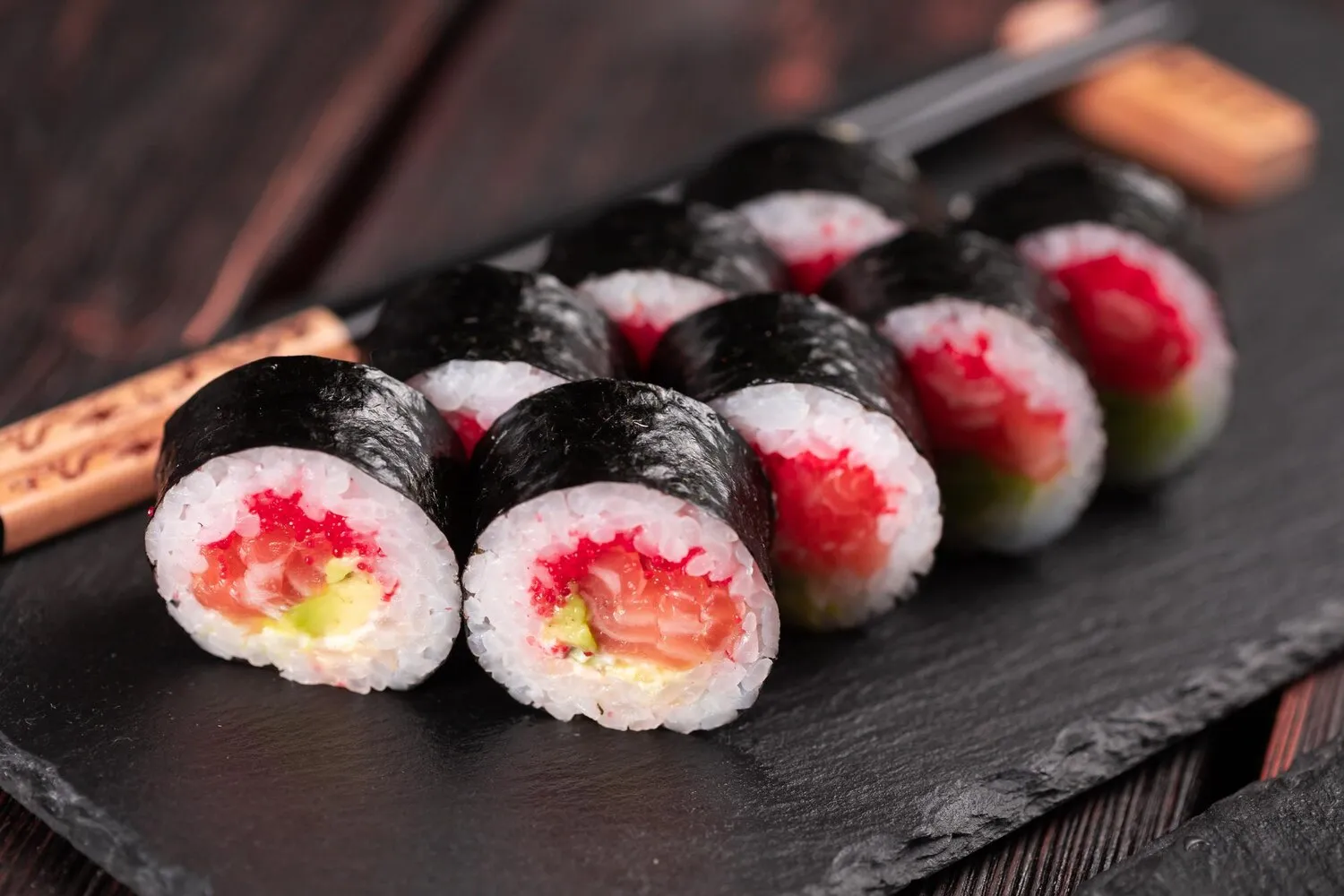
Maki Sake
Salmon Maki
Nutrition Facts
* The % Daily Value (DV) tells you how much a nutrient in a serving of food contributes to a daily diet. 2,000 calories a day is used for general nutrition advice.
Maki sushi evolved from earlier forms of sushi preservation techniques. The use of nori seaweed as a wrapper became common during the Edo period (1603-1868) in Japan, and the introduction of rice vinegar improved the palatability and preservation of the rice. Salmon's popularity in sushi, however, is a more recent trend, increasing significantly with the growth of the global seafood trade and advancements in refrigeration.
Salmon Maki is a widely accessible and popular form of sushi, enjoyed casually and in formal settings. It represents a modern adaptation of traditional sushi techniques to incorporate globally available ingredients.
Sushi Etiquette
While there are no strict rules for eating Maki, it's generally considered polite to eat sushi in one or two bites. Using chopsticks or fingers is acceptable. Dipping only the fish side of the sushi into soy sauce prevents the rice from becoming soggy and overly salty. Avoid mixing wasabi directly into the soy sauce in high-end restaurants.
Presentation
The visual appeal of sushi is important. Maki is often carefully sliced and arranged to showcase the ingredients. Garnishes, such as thinly sliced ginger or daikon radish, are used to enhance the presentation.
Freshness
The freshness of the ingredients, particularly the salmon, is paramount. Reputable sushi restaurants prioritize sourcing high-quality, fresh fish to ensure the best flavor and safety.
Salmon Maki offers a balanced flavor profile: fresh, slightly sweet salmon, umami-rich seaweed, subtly vinegared rice, and optional complements like soy sauce and wasabi.
The primary flavor is the rich, oily taste of fresh salmon. The nori seaweed provides a savory, slightly salty, and almost earthy undertone. Sushi rice contributes a subtle sweetness and tang from the vinegar, creating a balanced foundation. Soy sauce adds saltiness and umami depth, while wasabi provides a pungent kick to contrast the other flavors. Some versions may include pickled ginger (gari) to cleanse the palate between bites, offering a sharp, sweet, and sour element.
Rice Preparation
Use short-grain sushi rice and rinse it thoroughly before cooking. After cooking, gently mix the rice with sushi vinegar (a blend of rice vinegar, sugar, and salt) to achieve the correct flavor and stickiness. Allow the rice to cool slightly before using it.
Nori Quality
Use high-quality nori seaweed that is crisp and flavorful. Store nori in an airtight container to prevent it from becoming stale.
Rolling Technique
Use a bamboo sushi rolling mat (makisu) to help shape the maki. Spread the rice evenly on the nori, leaving a small uncovered strip at the top edge. Add the salmon and any other fillings, then use the mat to roll the maki tightly and evenly. Wet the uncovered strip of nori with water to seal the roll.
Salmon Selection
Choose sushi-grade salmon that is firm, brightly colored, and has a fresh, clean smell. Ask your fishmonger for recommendations and ensure the salmon has been properly handled and stored.
Explore additional Maki dishes and restaurants
Explore MakiDiscover top dining spots and culinary experiences in Leiden.
Explore LeidenLearn more about the food culture, restaurant scene, and culinary heritage of Netherlands.
Explore Netherlands